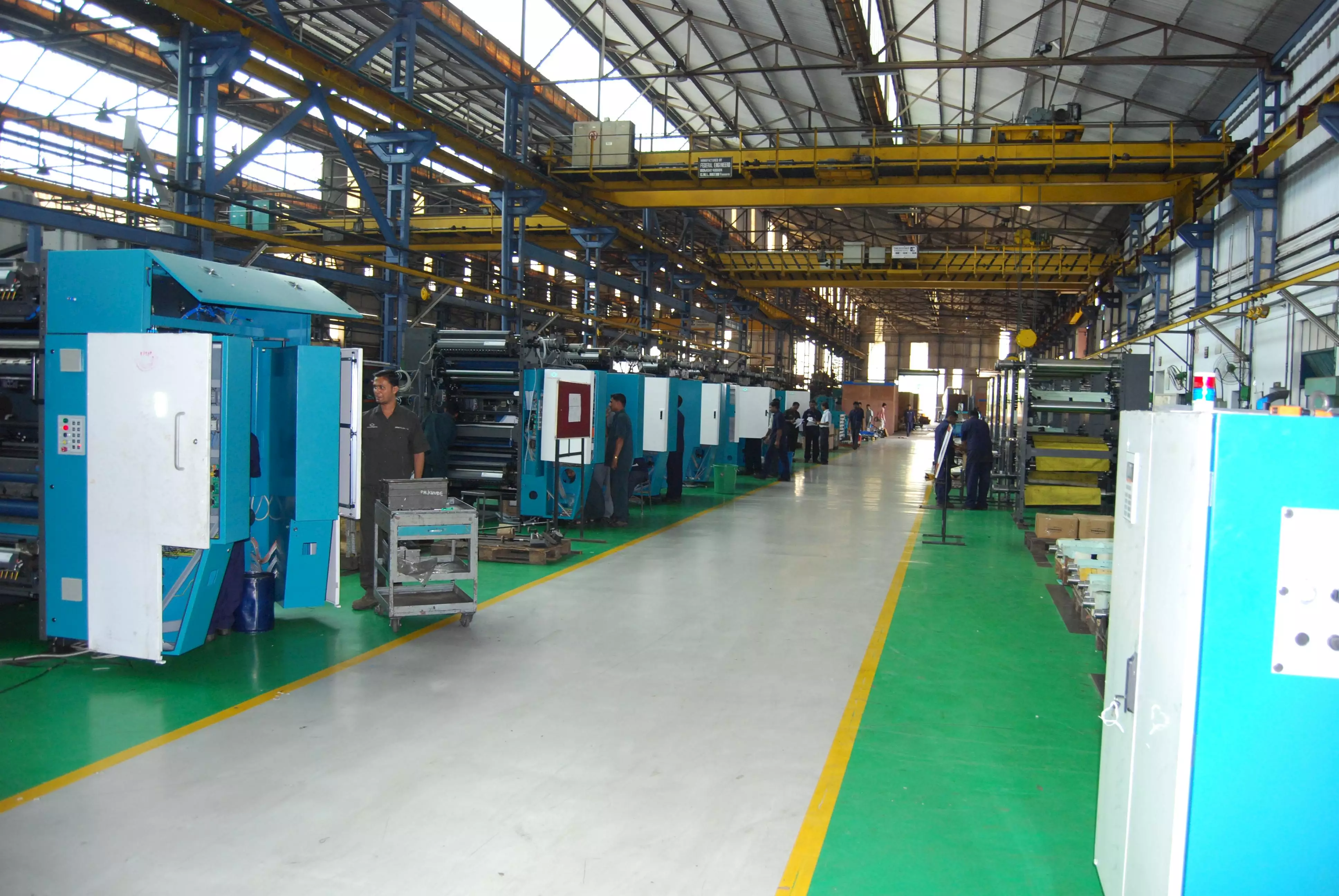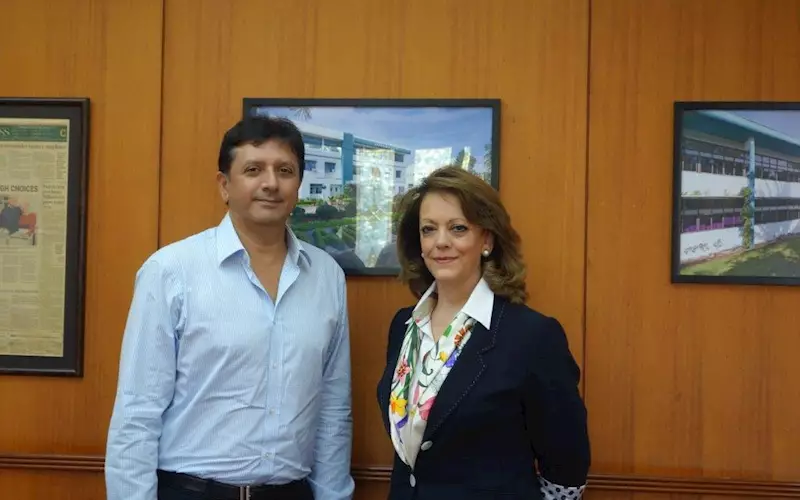South African printer endorses Manugraph's Cityline Express
Seculo Group of Companies came into being in 1963 because of Antonio Braz, a banana farmer and distributor, who believed that it was important for the Portuguese community to have a voice in Southern Africa and Arthur Roux who had solid print background and knowledge of the South African business market. That's how the O Seculo de Johannesburg was launched; and to-date the publication is the biggest brand within the group.
19 Sep 2013 | By Anand Srinivasan
 In the late eighties, one of Portugal’s most successful, if not the most iconic entrepreneur, Horacio Roque, who also believed that the Portuguese needed a voice in Africa was involved in Seculo Printers. He created, what is today, the Seculo Group of Companies with Roque as the driving force, and a new Goss Community web offset press was commissioned. In 2001, the Seculo Group opted for a raft of Heidelberg presses and by 2006 a new HiLine Manugraph press was installed. Recently, the group has ordered a new Cityline Express from Manugraph.
In the late eighties, one of Portugal’s most successful, if not the most iconic entrepreneur, Horacio Roque, who also believed that the Portuguese needed a voice in Africa was involved in Seculo Printers. He created, what is today, the Seculo Group of Companies with Roque as the driving force, and a new Goss Community web offset press was commissioned. In 2001, the Seculo Group opted for a raft of Heidelberg presses and by 2006 a new HiLine Manugraph press was installed. Recently, the group has ordered a new Cityline Express from Manugraph.
Paula Caetano, president at Seculo Group talks to Printweek India’s Anand Srinivasan about how Manugraph has helped the group in leveraging its strength in the South African newspaper market
AS: What were the things you sought when identifying a Manugraph press?
PC: The Seculo Group was looking for a reliable printing press machine that is compatible to our existing Goss and Hiline coldset machines that are more mechanically orientated rather than electronic. The Manugraph Cityline Express, 32-page tabloid full colour have two folders, which we can use for two different jobs up to an eight-page broadsheet. It also gives us flexibility and excellent multi-colour printing quality.
AS: And why did you select a Manugraph Press?
PC: Due to the long runs undertaken by Seculo Group, the machines cannot be down for long period of time waiting for parts to be flown out to. A couple of hours of down time is all that can be afforded while repairing some mechanical problem. The Cityline Express meets these requirements and with the undertaking by Pradeep Shah, managing director, Manugraph India, a Manugraph technician will be in our premises within 24 hours when needed, which is what I consider excellent after sales service.
AS: Which equipment are you using currently?
PC: Currently, we have a mix of Heidelberg and Goss presses with a Manugraph Hiliner 4, installed in 2006, a 6-page broadsheet or 32 tabloids newsprint. In addition, as I mentioned earlier, we have purchased a new Cityline Express from Manugraph in 2013. We expect it to be installed shortly. It was to cater to our clients needs i.e. excellent performance in quality and turnaround time.
AS: You were in India, and you visited Manugraph’s Kolhapur factory. Your view.
PC: The Manugraph Kolhapur factory has state-of-the-art manufacturing facilities. The staff is highly productive. They work towards a common goal to accomplish personal and professional success. All details are looked into in order to deliver a final product. I was extremely impressed with the fact that most of the staff is from Kolhapur, which means Manugraph cares for the quality of life in the community around them. I also pleasantly noticed that Manugraph promotes social awareness and has career guidance programmes. The team consists of versatile professionals. They have a highly skilled workforce where human resources and technology come together.

Seculo Group: An overview
AS: Seculo group is one of the leading newspaper printer in South Africa. So, on an average, what is the daily print order that you receive?
PC: We print approximately 25,000,000 copies monthly of 32-page broadsheet, newsprint. Four editions of six million for one client, 97,000 copies of different types of glossy magazines and newsprint. Through this we consume around 150 plates a day and approximately 45,000 litres of ink per month.
AS: Do you import the paper stock or order it from a domestic paper vendor?
PC: We buy paper locally from Sappi, 11,000 tones per annum. In the past, we have imported glossy paper and newsprint paper from Sweden, Norway and France, depending on the exchange rate.
AS: Describe the people strength at your newspaper plant?
PC: We have one plant which employs approximately 250 people; from factory managers, to electricians, machine minders, mechanics, fork lift drivers, stitch and trimming department, assistants, dispatch department, store man, together with a newsroom attendant and reporters.
The South African market
AS: The future of newspaper in South Africa?
PC: Newspapers will never cease to exist but fewer copies will be printed daily.
AS: It is said that consumer demand and readership is driving the growth of digital. Your views.
PC: Digital readership accounts for approximately 1.4 % of all magazine readerships, but its market share is growing rapidly. Digital grew from approximately nine million to 18 million in one year. Most magazines have a digital edition. Some magazine’s digital growth can be at least partly attributed to the fact that their digital editions are offered to readers for free. Although the consumer demand and readership is driving the growth of digital, there is a generation of human beings above the age of 55, contributing to a large percentage of world population, preferring the traditional newspapers. They like the sensation of the paper in their hands and the turning of a page.
AS: What is the size of the newspaper industry in South Africa?
PC: The history of newspapers in South Africa dates back to 1800. There are approximately 36 daily and weekly urban newspapers in South Africa. 29 in English and four in Afrikaans, two in Zulu and one in Xhosa. There is a big culture of newspaper reading. There are also a large number of free (advertising funded) local and community newspapers. It is estimated that 1.8 million newspapers are sold in South Africa, daily. South Africa also has a very robust magazine industry with an estimated 280 locally – published titles available. The industry’s annual turnover is estimated to be about two billion rand (approximately Rs 1,200 crores).












 See All
See All